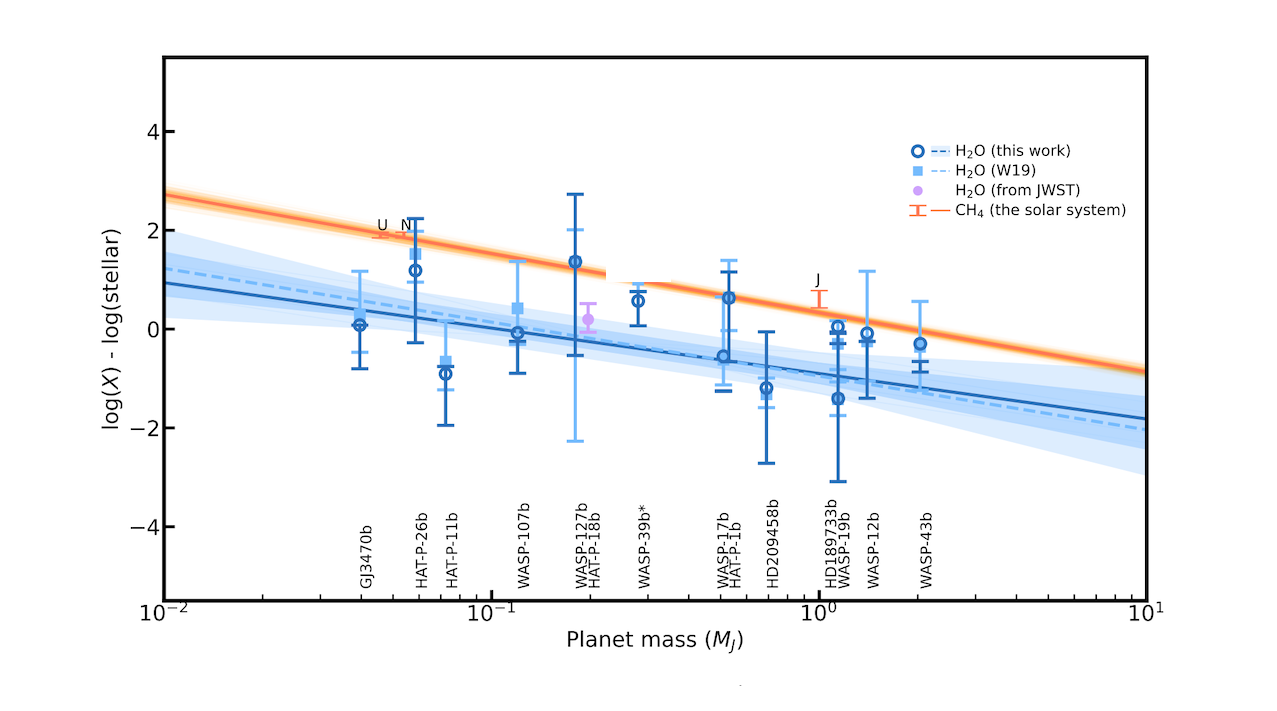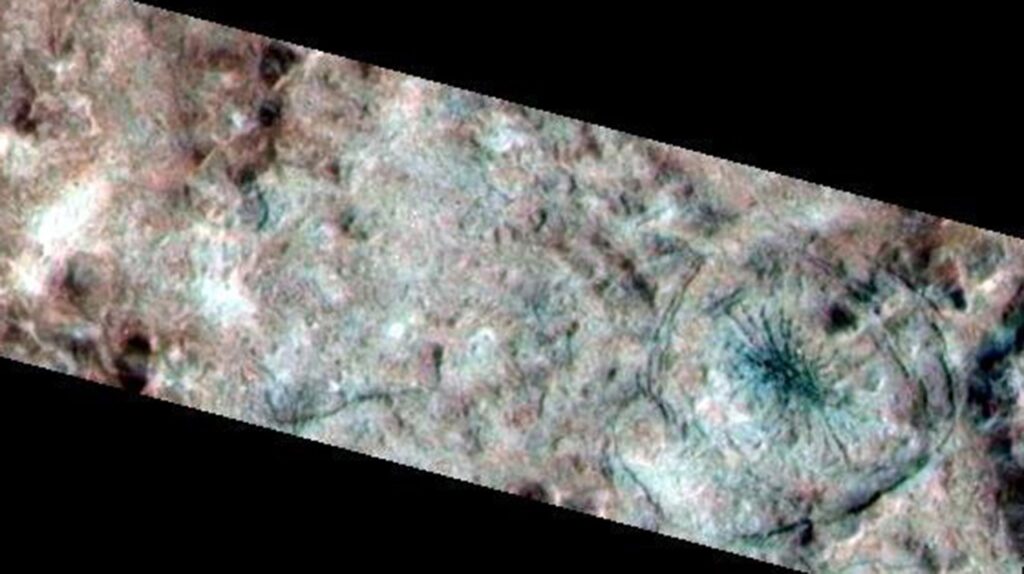A Revisit Of The Mass-Metallicity Trends In Transiting Exoplanets

The two prevailing planet formation scenarios, core-accretion and disk instability, predict distinct planetary mass-metallicity relations. Yet, the detection of this trend remains challenging due to inadequate data on planet atmosphere abundance and inhomogeneities in both planet and host stellar abundance measurements.
Here we analyze high-resolution spectra for the host stars of 19 transiting exoplanets to derive the C, O, Na, S, and K abundances, including planetary types from cool mini-Neptunes to hot Jupiters (Teq ∼ 300 – 2700 K; planet radius ∼ 0.1 – 2 RJ). Our Monte Carlo simulations suggest that the current dataset, updated based on Welbanks et al. 2019, is unable to distinguish between a linear relation and an independent distribution model for the abundance-mass correlation for water, Na, or K.
To detect a trend with strong evidence (Bayes factor > 10) at the 2σ confidence interval, we recommend a minimum sample of 58 planets with HST measurements of water abundances coupled with [O/H] of the host stars, or 45 planets at the JWST precision. Coupled with future JWST or ground-based high resolution data, this well-characterized sample of planets with precise host star abundances constitute an important ensemble of planets to further probe the abundance-mass correlation.
Qinghui Sun, Sharon Xuesong Wang, Luis Welbanks, Johanna Teske, Johannes Buchner
Comments: 4 figures, 5 tables, accepted for publication in AJ
Subjects: Earth and Planetary Astrophysics (astro-ph.EP); Solar and Stellar Astrophysics (astro-ph.SR)
Cite as: arXiv:2402.08292 [astro-ph.EP] (or arXiv:2402.08292v1 [astro-ph.EP] for this version)
Submission history
From: Qinghui Sun
[v1] Tue, 13 Feb 2024 08:47:31 UTC (307 KB)
https://arxiv.org/abs/2402.08292
Astrobiology








